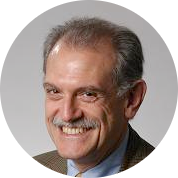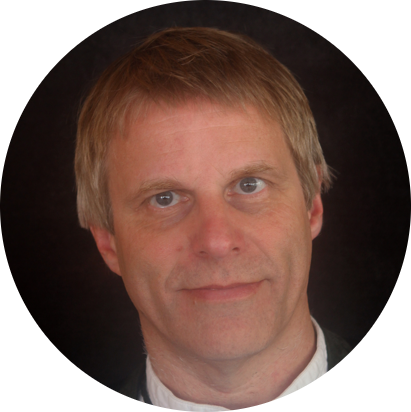The Department of Information Engineering is proud to present the Distinguished Lecturer Series 2017 The Distinguished Lecturer Series, active since 2004, is an annual program of high impact lectures where internationally renowned scholars are invited to discuss cutting-edge research in ICT and neighboring disciplines. While aiming at scientific excellence, our lectures are typically open to the general public as well.
We are looking forward to meeting you in our upcoming events.
www.dei.unipd.it/distinguished
 Is Technology Transfer a Dream or a Reality?
Is Technology Transfer a Dream or a Reality?
Friday, May 12, 2017 - 16:30
Aula Magna, Palazzo Bo' (within the program of "Galileo Innovation Festival") REGISTRATION REQUIRED
Alberto Sangiovanni Vincentelli
Professor, Department of Electrical Engineering and Computer Science, University of Berkeley, California
 Consciousness: from Theory to Practice
Consciousness: from Theory to Practice
Thursday, May 18, 2017 - 14:30
Aula Magna A. Lepschy, Dept. of Information Engineering
Giulio Tononi
Professor, Department of Psychiatry, University of Wisconsin, Madison
 Personal Behavioral Technology - Wearables Can Become an Active Contributor to Your Wellbeing
Personal Behavioral Technology - Wearables Can Become an Active Contributor to Your Wellbeing
Friday, September 22, 2017 - 11:00
Aula Magna A. Lepschy, Dept. of Information Engineering
Chris Van Hoof
Holts Centre/ IMEC, The Netherlands
Short bio & Abstract
Distinguished Lecturer Series 2017 is an event partially co-sponsored by 
SHORT BIOS and ABSTRACTS
Is Technology Transfer a Dream or a Reality?
Friday, May 12, 2017 - 16:30
Aula Magna, Palazzo Bo' (within the program of "Galileo Innovation Festival")
REGISTRATION REQUIRED
Alberto Sangiovanni Vincentelli
Professor, Department of Electrical Engineering and Computer Science, University of Berkeley, California
Short Bio: Alberto Sangiovanni Vincentelli holds the Edgar L. and Harold H. Buttner Chair of Electrical Engineering and Computer Sciences at the University of California at Berkeley. He has been on the Faculty of the Department since 1976. He obtained an electrical engineering and computer science degree ("Dottore in Ingegneria") summa cum laude from the Politecnico di Milano, Milano, Italy in 1971. In 1980-1981, he spent a year as a Visiting Scientist at the Mathematical Sciences Department of the IBM T.J. Watson Research Center. In 1987, he was Visiting Professor at MIT. He has held a number of visiting professor positions at Italian Universities, including Politecnico di Torino, Universita’ di Roma, La Sapienza, Universita’ di Roma, Tor Vergata, Universita’ di Pavia, Universita’ di Pisa, Scuola di Sant’Anna. He is a member of the Advisory Board of the Lester Center for Innovation of the Haas School of Business and of the Center for Western European Studies and is a member of the Berkeley Roundtable of the International Economy (BRIE). He is Honorary Professor at Politecnico di Torino.
Abstract: Recently, much attention has been devoted to the process of moving research results towards commercial exploitation in Italy and elsewhere. Interactions with corporations are encouraged via the use of sponsored research. However, successful technology transfer has been difficult at best. Unfortunately, technology transfer is often a synonym for “work for hire” where specific R&D tasks are assigned to Universities. The real goal of the “technology transfer” process should be to favor the adoption of RESEARCH results in corporations, let them be start-ups based on these results or established, profitable companies. In this respect, patience is an important ingredient for success. In the average, the first commercial use in corporations takes more than 15 years for “hardware” and more than 10 years for software. Insisting on a shorter time-line yields either poor results or poor research. I will analyze various models of technology transfer and contrast them with an eye to suggesting actionable initiatives to improve this important process.
Consciousness: from Theory to Practice
Thursday, May 18, 2017 - 14:30
Aula Magna A. Lepschy, Dept. of Information Engineering
Giulio Tononi
Professor, Department of Psychiatry, University of Wisconsin, Madison
Short Bio: Giulio Tononi is a psychiatrist and neuroscientist in Madison, Wisconsin, whose work focuses on the function of sleep and the nature of consciousness. Together with his collaborators, he has been developing and testing a comprehensive hypothesis on the function of sleep, the synaptic homeostasis hypothesis. Research on consciousness has led to the integrated information theory, which tries to account for what consciousness is, how it can be measured, and how it is realized in the brain.
Abstract: Neuroscience has made great progress in relating the behavioral and neural correlates of consciousness. Yet it has proven hard to establish which neural structures and modes of activity are necessary and sufficient for being conscious. Moreover, empirical studies are inadequate to assess the presence and quality of consciousness in difficult cases, such as certain unresponsive patients, newborn infants, animals with behaviors and brains unlike ours, or machines that approximate our cognitive abilities. To make headway, empirical studies must be complemented by a fundamental theory of what consciousness is and what it takes to have it. Integrated information theory (IIT) starts from the essential properties of consciousness and translates them into requirements that any physical system must satisfy to be conscious. It goes on to show that the physical substrate of consciousness (PSC) must be a maximum of intrinsic, irreducible cause-effect power, and provides a calculus to d
etermine, in principle, both the quality and the quantity of an experience. Applied to the brain, the principles of IIT imply that the PSC is constituted of those neural elements that together compose a maximum of intrinsic cause-effect power, and that such maximum can shrink, move, split and disintegrate depending on various anatomical and physiological parameters. Similarly, IIT predicts that the spatial grain of the neural elements constituting the PSC, the temporal grain at which they do so, and the relevant neural states, are again those that maximize intrinsic cause-effect power. These predictions are in principle testable with stimulation and recording experiments at the systems and cellular levels. The theory can explain parsimoniously many known facts about the relationship between consciousness and the brain, including its association with certain cortical structures, its breakdown in deep sleep, anesthesia and seizures, and its return in dreams. It has also motivated the
development of promising new tests for the practical assessment of consciousness in non-communicative subjects. Finally, the theory implies that intelligence and consciousness can be dissociated. For example, a computer/robot capable of replicating all the functions of a human, or even simulating in detail the working of a human brain, would be functionally equivalent yet remain completely unconscious
Personal Behavioral Technology - Wearables Can Become an Active Contributor to Your Wellbeing
Friday, September 22, 2017 - 11:00
Aula Magna A. Lepschy, Dept. of Information Engineering
Chris Van Hoof
Holts Centre/ IMEC, The Netherlands
Short Bio:
Chris Van Hoof leads imec’s wearable health R&D across 3 imec sites (Eindhoven, Leuven and Gent). Imec’s wearable health teams provide solutions for chronic-disease patient monitoring and for preventive health through virtual coaching. Chris has taken wearable health from embryonic research to a business line serving international customers. Chris likes to make things that really work and apart from delivering industry-relevant qualified solutions to customers, his work resulted in 4 imec startups (3 in the healthcare domain). After receiving a PhD from the University of Leuven in 1992 in collaboration with imec, Chris has held positions as manager and director in diverse fields (sensors, imagers, 3D integration, MEMS, energy harvesting, body area networks, biomedical electronics, wearable health). He has published over 600 papers in journals and conference proceedings and has given over 60 invited talks. He is also full professor at the University of Leuven where he has been teaching technology of integrated systems since 2000.
Abstract:
Between 70% and 85% of the healthcare budget in OECD countries is spent treating chronic patients. Yet, behavior and lifestyle are at the root cause of nearly 80% of these chronic diseases and they are at least in principle preventable. Generic measures to achieve behavior change and prevent disease have proven to be not successful. Giving advice that is not timely, not actionable, and not personalized leads to low compliance of the user. Exactly because we are all different, and evolve over time, a key to success will be achieving personalization well beyond what is offered by today’s wearables and APPs. To achieve such personalization, we are creating digital phenotyping methods, which combine vast personal physiological information from diverse custom created wearable sensors, smartphone information and contextual information to learn individual behavior as well as habits and triggers. This will be the basis for giving the right actionable recommendations to the right person at the right time. Such highly perceptive and just-in-time feedback contrasts with today’s mainly time-based recommendations that are at best location aware and are not based on longitudinal nor personal physiological data. As the domain of preventive health is vast and diverse, we currently focus on three pilot applications: personalized stress management (for healthy people as well as patients), smoking cessation and eating behavior. For each application, in our living labs we conduct large-scale (i.e. 1000 persons), long-term (weeks or months) trials to account for the variability among people and over time. This research brings together multidisciplinary expertise and leverages clinical collaborations with psychiatrists, behavioral scientists and psychologists.